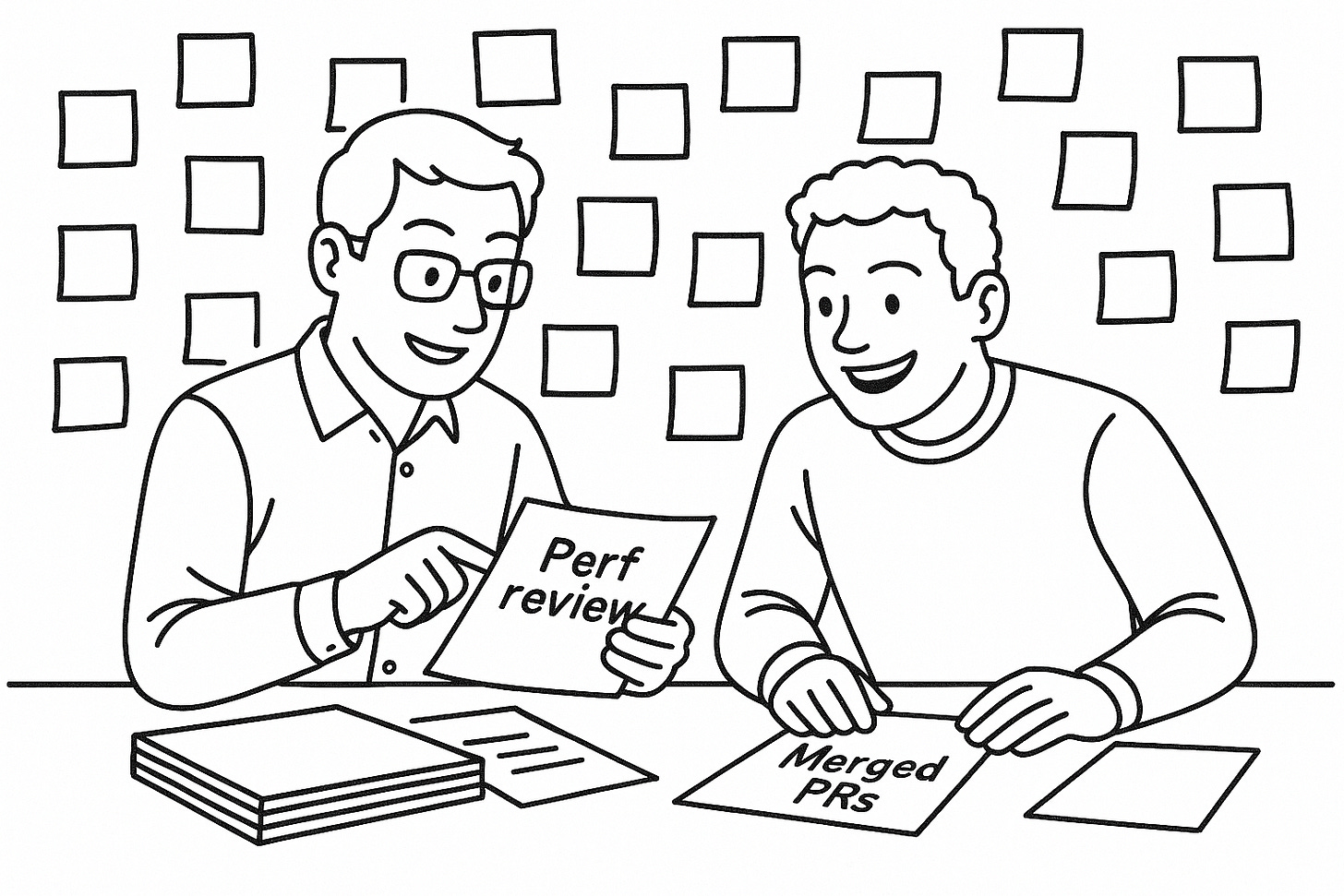Get promoted faster with an AI-written brag doc
Using AI to keep a brag document can help you grow your career
As a software engineer, you have a secret weapon for career growth. What is it?
The “brag document.”
In a perfect world, great work would speak for itself. But the world isn’t perfect. You’re busy. Your manager is busy. Your senior leaders are busy.
A brag doc helps you remember and articulate your achievements to get the recognition you deserve. This newsletter edition dives deep into why a brag doc is a game-changer, and how you can use AI to create and polish your own brag document. This will help you:
Prep for quarterly (or annual) reviews better than your peers
Prep for reviews quickly
Make it easy for your manager to understand the value you bring to the business
Today I’ll cover the benefits for your career, a step-by-step approach to building one, prompt templates for leveraging AI, and a concrete example of turning a quarter’s work into brag-worthy accomplishments.
Why a brag doc changes the game for your career
A brag document is essentially a running list of your wins. Think of it as your personal changelog of achievements at work. Maintaining this doc might feel like extra work, but it delivers outsized benefits for your career (and saves you time in the longrun)
Ever get to performance review time and draw a blank on what you did months ago? A brag doc helps you remember what you did. It ensures those “small” wins aren’t lost to time. Not everything is (or should be) tracked in Jira or GitHub.
Regularly logging your work gives you visibility into how you spend your time. You could work ten times harder than any of your peers and still not advance if that effort went into the wrong things.
A brag doc helps you and your manager avoid the trap of recency bias. When review season or promotion time comes, it’s too easy for everyone to only recall the last few weeks of work. An organized list of what you did and why it mattered over the entire period gives a clear view of your impact on the business. This makes it much easier for your manager (and their manager) to appreciate the full value you delivered.
The basics of building a brag doc
So how do you actually make a brag document? At its core, a brag doc is just a list of accomplishments with context. I update mine somewhere between monthly and quarterly. Here’s how to build one effectively
Gather your work from things like Jira and GitHub. Begin by pulling together the raw data of what you worked on. Crack open your issue tracker (Jira, Trello, etc.), your Git commit history, pull requests, or any project notes. Copy down the significant things you completed. Don’t worry about wording yet – just list out features shipped, bugs fixed, incidents resolved, design docs written, etc. Links are super helpful here. Half an hour of combing through tickets and commits can easily surface a quarter’s worth of work items to start with.
For each item, note what actions you took and why it matters to the business. This is the golden rule of brag docs. Next to every bullet of what you accomplished, add a blurb about why it mattered. For example, writing “Implemented caching on the user profile page” is okay, but “Implemented caching on the user profile page to reduce load times by 40%, improving user experience” is much better. If your work tied into a team OKR or company goal, mention that too.
Include all types of work (not just code). Your brag doc should capture everything you do that provides value, not only the code merged or tickets closed. It’s easy to remember the big feature launches, but don’t forget the “glue work” that often flies under the radar. Did you mentor a new hire? Lead incident response for a major outage? Improve the CI/CD pipeline or refactor some nasty legacy code to prevent future bugs? These softer contributions are critical to the business and team health, so they belong in your brag doc. In fact, these are often the things others might not notice unless you point them out. Consider a quick calendar review or check your Slack/Emails for evidence of these sorts of tasks if you forget the specifics.
Oranganize the document to represent your goals. Once you have a decent list of accomplishments with “what” and “why”, think about who will read this and why. Is this mostly for you, to reflect and prepare for your own growth? Is it for your manager to use in a performance review? Tailor the structure accordingly. There’s no one-size-fits-all format, but a few of my favorite approaches:
Chronological list
By project or feature
By skill/competency or goal – group by areas you want to highlight (“Backend Architecture Improvements”, “Team Leadership”, “Customer Impact Projects”). This approach is great for connecting your work to promotion criteria or personal growth areas.
Promotion-focused – If you’re gunning for the next level, align your entries with the expectations of that next level. When I was working towards becoming a senior engineer, I tracked how each piece of work demonstrated a competency required at the level above mine, complete with links to design docs and PRs as evidence. Over a year, this became a dense document proving I was already performing at the next level.
If you follow these steps, you should have a solid brag document or at least a first draft. Now, we’ll look at what you probably came here for: How to use AI to make this much less painful
Using AI to make brag docs even easier
You can offload some of the grunt work and even get help phrasing your achievements in the best light with tools like ChatGPT. Let’s walk through how AI can turbocharge your brag document workflow:

